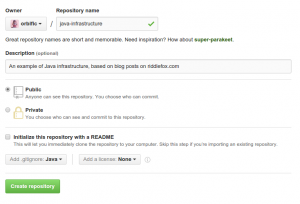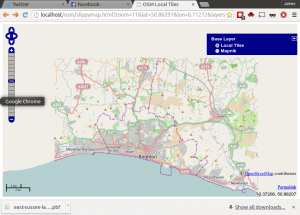In theory, compiling our Java class is straightforward: drop into the command line, use the javac command, then test by running the main method.
Which is fine on my laptop – I now know I can compile the code and run it. But problems can arise as the code in question becomes more complex, or if it needs to run on other machines. The latter is a certainty – putting aside failure of this laptop, I want to run this code on a server at some point. (That is, unless I decide to develop directly on the production machine. That seems such an appalling idea that I find myself wondering whether there is some bizarre case to be made for it).
Using java -showversion reveals that I am using 1.8.0_72. The latest version at the moment is Version 8 Update 73, which was released on February 5th 2016 – I’m writing this on the 21st. There are two problems here.
- How do I make sure that this code is always handled with a consistent version of the Java SDK? I don’t want to risk inconsistent behaviour between different machines.
- How do I make sure that I am running the latest version of the SDK? Looking at the release notes for version 73 to see the differences between this and the version, I notice that there are some security patches that I’m not taking advantage of.
This problem will occur with every tool that is used. A similar problem will occur when we start adding some dependencies to the software, but we will deal with that separately.
There is also a certain amount of configuration that remains implicit when I am running on a single machine. Right now this doesn’t matter much, but these sorts of problems become a nightmare as the software grows – what are my environmental variables? What is the underlying OS?. It would only take a few minutes for a developer to set up a new machine to run this code now, but as we add databases, continuous integration etc, we end up with that becoming more difficult.
Consistency sounds like an obscure problem (and is low-risk for the Java SDK), but when it does arise, it’s vicious. You don’t want a bug on the server that can’t be easily spotted on development machines. If the development and production environments are the same then every bit of work carried out confirms that the code works as it should.
What are some options for dealing with these issues?
- Document a target environment fully and allow people to follow that as closely as they want/need to. There are still problems when doing this, but it’s more than a lot of companies bother with.
- Use a bespoke local machine build image – the question then becomes how to keep existing machines in sync with this. Over time, the machines diverge from the original image, or the that image needs updating. This can be complicated by machines needing special builds for testing etc.
- Find a way to develop cleanly using docker/vagrant or similar. The code is executed and possibly compiled within VMs.These can be rebuilt every time.
Build images and documentation are both useful first steps, but ultimately, the VM-based solutions feel right. At this point, I am going to put in some TODOs to cover this. It’s unsatisfactory, as there are now 5 of them (compared to just 11 lines of code, 5 of which are blank or single characters). This issue needs to be dealt with soon, but I want to put in a bit more structure to make this easier. However, as a stop-gap we should also note our current build environment in the README file.
The latest git revision is eb62957. In the next part, I’ll be adding an automated build tool.





